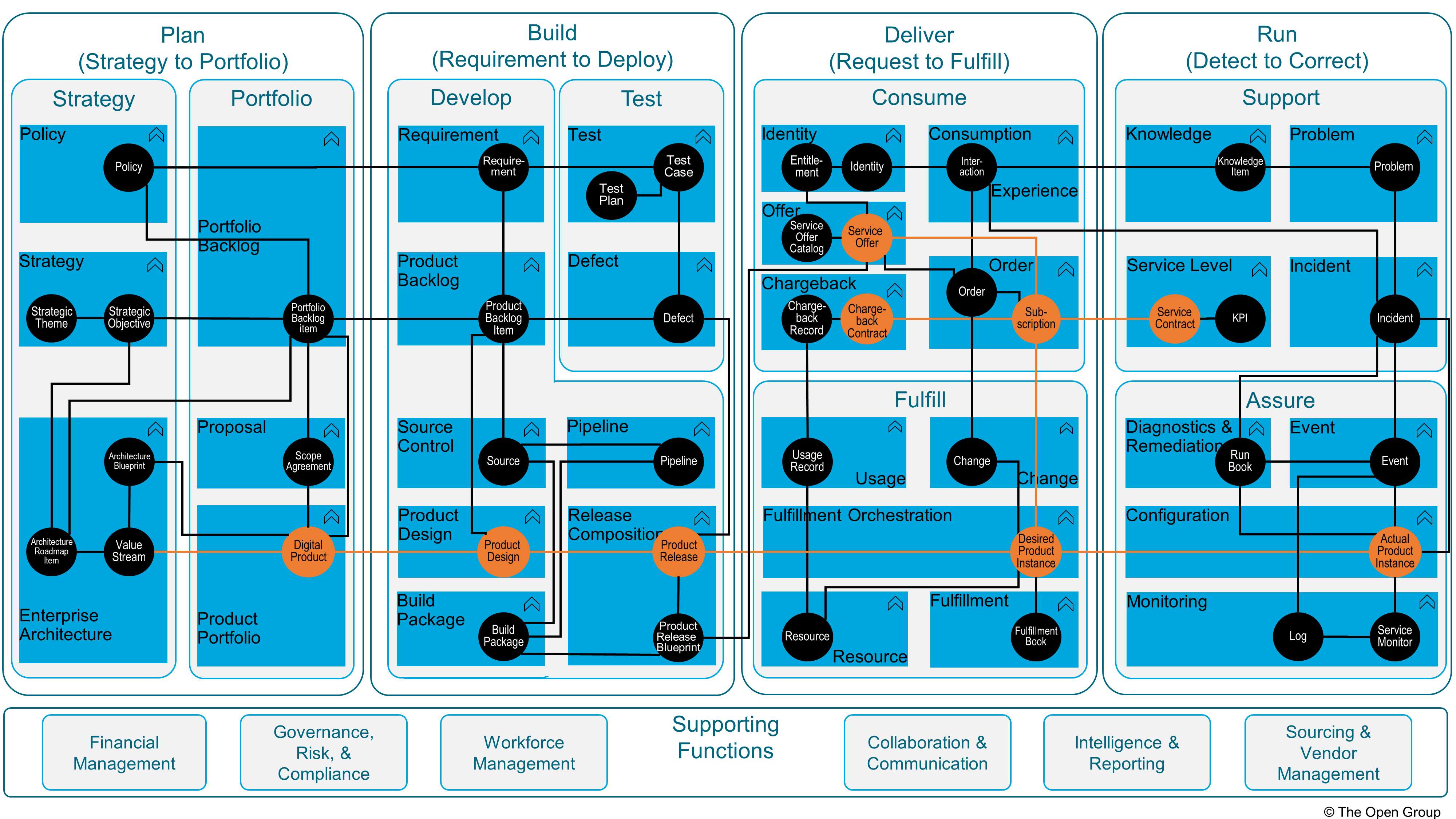Introducing Functional Components and the Data Model
The seven IT4IT Value Streams are defined in IT4IT Value Streams. Each IT4IT Value Stream depends upon an end-to-end flow of work – via data objects – through multiple functional components to deliver the expected result for the customer, stakeholder, or end user.
The IT4IT Standard defines functional components as the application building blocks for managing Digital Products. Related functional components are associated together into four functional groups. A further decomposition is made from the four high-level functional groups into eight (sub-functional groups that must be established in order to manage Digital Products: Strategy, Portfolio, Develop, Test, Consume, Fulfill, Support, and Assure.
While the IT4IT Value Streams orchestrate, consume and/modify multiple data objects in the flow of work to deliver value, we provide a high-level visualization in The IT4IT Functional Groups, Value Streams, and Associated Digital Product and Service Offer Backbone Data Objects where we highlight only the backbone data objects.

These eight functional groups shown in The IT4IT Level 1 Functional Diagram are then populated by 33 functional components that control 44 key data objects. The 44 data objects are manipulated as the seven value streams are exercised: exploring, integrating, deploying, releasing, consuming, operating, and evaluating the Digital Products. The data objects are related to each other and in The IT4IT Level 1 Functional Diagram we show some of the most important relations. For the full list of relations and their associated cardinality see Chapters 6 to 10.
